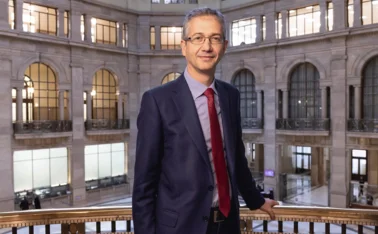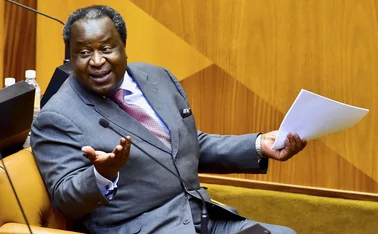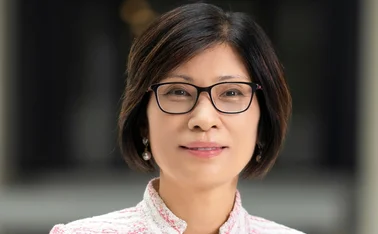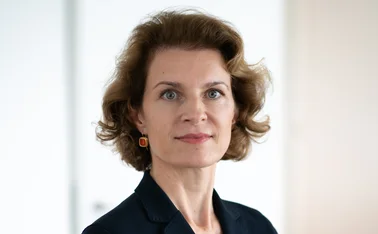
Lifetime achievement award: Donald Kohn
His career epitomises that of a dedicated public servant, and serves as an inspiration to others
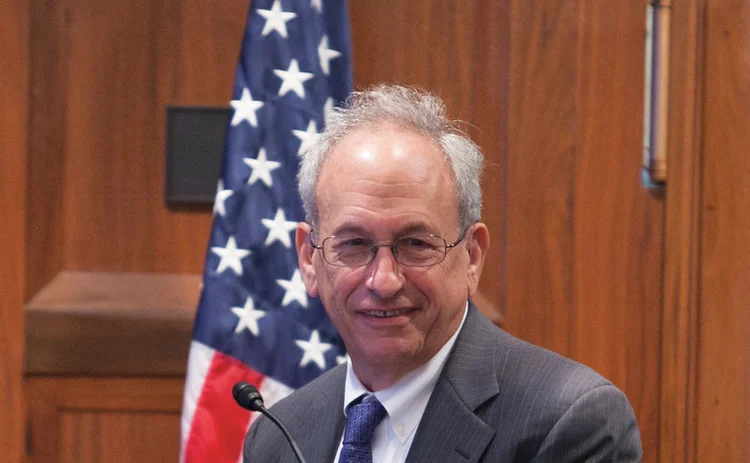
Donald Kohn may not have seen it all. But he has seen and done an awful lot. The career of the US Federal Reserve System veteran spans four and a half decades – about two-fifths of the Fed’s existence. He has also served under five Fed chairs as well as one Bank of England (BoE) governor. When US presidential candidate Donald Trump criticised Fed chair Janet Yellen in 2016 for keeping interest rates too low, Kohn was one of the few active central bankers to have witnessed something similar before – back in the 1970s, when US president Richard Nixon launched a smear campaign against then Fed chair Arthur Burns.
Kohn’s career encapsulates the astonishing journey that the Fed – and other developed world central banks – has undertaken during the past half-century. It started at a time when the Federal Reserve Board was often publicly lambasted by politicians, passing through a time of struggle to ensure independence de facto and not just de jure, until witnessing a period when most of the politicians – most of the time – left the Fed alone to get on with its job. The Fed also in effect led an international shift towards operationally independent central banks pursuing specific targets – typically, price stability defined in terms of an inflation target of around 2%, but in the case of the Fed, maximum employment and increased production. Kohn’s work provided vital support for that process. But Trump’s intervention and other recent events in various countries have shown the struggle to protect central bank operational independence – which always has to include transparency and accountability – will never cease.
Kohn’s key role at the Federal Reserve was recognised in 2002 when Alan Greenspan petitioned for him to join the board. He later rose to the position of Fed vice-chairman from 2006 to 2010 under the next chair, Ben Bernanke.
When the financial crisis hit, central bankers faced widespread accusations that they could and should have done more to reduce financial stability risks in the lead-up to the crisis, and that their ‘loose’ monetary policies had fuelled the asset bubble. As vice-chairman of the Fed, Kohn was chairman Bernanke’s ‘right-hand man’ in framing the board of governors’ response, and was described by him as “a calming and reassuring presence”. “Calm and reassuring” are, indeed, adjectives often used by fellow central bankers when Central Banking asked them to characterise their experience with Don Kohn.
Kohn became the go-to person for international central bank co-ordination and co-operation, drawing praise from the heads of major central banks such as former European Central Bank (ECB) president Jean-Claude Trichet and Mark Carney, former Bank of Canada governor and current BoE governor. This combination of abilities explains why the BoE invited Kohn to become a member of its newly formed Financial Policy Committee in 2011, a position he continues to hold.
Inflation busting and transparency
Kohn began his career as a financial economist at the Federal Reserve Bank of Kansas City in 1970, which he joined after gaining his doctorate from the University of Michigan. After five years at the Kansas Fed, he became an economist in the Federal Reserve Board’s division of research and statistics, rising up the ranks to become chief of capital markets in 1978 and associate director from 1981 to 1983.
Kohn work as an economist in the 1970s made him acutely aware of the dangers of inflation during the period when Fed chairs Arthur Burns and William Miller failed to get a grip on price stability. “We saw, as a society and certainly as a central bank, how destructive and disruptive inflation could be for the economy, for economic activity, and how destructive of individual economic welfare,” Kohn told Central Banking in an interview in 2010.
While the reputation of central banks took a battering for their role either by standing by and permitting bubbles to foment – or, in some cases, fuelling them – Kohn was earning a reputation as a source of sound advice and considered action during turbulent times
Then Paul Volcker took over as chair in 1979, a role he would hold until 1987. The anti-inflation stance taken by Volcker – notably in October 1979, when he persuaded the board to take radical action turned out to be a milestone in central banking and world monetary history. The action was announced just after his predecessor Burns had told an audience in Belgrade that political pressures had prevented the central bank from taking action as it would have entailed “frustrating the will of Congress to which it was responsible” – (see ‘The Anguish of Central Banking’).
Kohn was by then already convinced that inflation was not “buying” additional employment, at a time when no “real substitute” for the Bretton Woods international monetary system – when the dollar was pegged to gold – had emerged. US consumer price inflation fell from 13.6% in 1980 to 1.8% in 1986. “Inflation is uniquely the responsibility of the central bank… That has been an important evolution in central bank policy emphasis, culminating in a lot countries adopting inflation targeting,” Kohn told Central Banking.
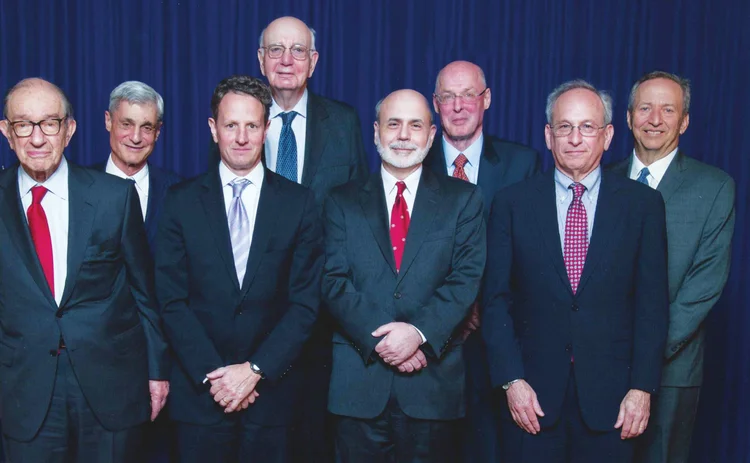
Meanwhile, Kohn continued to rise through the Fed ranks. During Volcker’s term, he was made deputy staff director for monetary and financial policy in 1983, before taking over as director of the division of monetary affairs and secretary of the Federal Open Market Committee (FOMC) from 1987 – a role he held until 2002.
It was towards the end of Volcker’s chairmanship, in 1986, that Kohn took a seat at the FOMC table for the first time, when he briefed the committee on policy options. “I recall remarking to my wife: ‘Who would have thought after years of study of monetary policy at Wooster and Michigan, and on the board’s staff, that I would be at the table advising policymakers on decisions future students would examine?’”” he told Central Banking. “It was like a dream come true.”
Public policy influence
It was the start of a sustained period where Kohn influenced public policy – mostly, at this stage, behind the scenes. He had clearly made his mark by the time Greenspan came to office in 1987. “He was effectively my ‘mentor’ during my freshman year as chairman in 1987,” Greenspan told Central Banking. “I have sought his guidance on critical decisions ever since.”
Greenspan and his team also had a strong record on inflation. During Greenspan’s tenure from 1987–2006, average inflation in the US stood at 2.4% – even though a formal inflation target was not adopted until 2012. Kohn, like Greenspan, was not an early convert to inflation targeting.
Inflation targeting and transparency
He also appears initially to have been wary of the growing fashion for transparency in central banking. Kohn’s stance at this time is brought to life by a story told by Sebastian Mallaby in his book on Greenspan, The man who knew. Mallaby recounts that in 1989, after Lee Hoskins – then president of the Federal Reserve Bank of Cleveland – proposed the idea of adopting an explicit inflation target, Kohn (by this time, the head of the Fed’s division of monetary affairs) warned colleagues of its downsides: “It’s what we do more than what we say – read our actions, rather than our lips”.
Kohn added that he was wary of external factors, such as wars or droughts over which the Fed had no control, potentially affecting inflation. The implication was that if the Fed missed its target because of situations well beyond its control, it would risk losing credibility. It is a concern echoed by many central bankers around the world today, especially in emerging markets.
But his position – at least, regarding transparency and guidance matters – had shifted by the early 1990s. At the time, there were no post-FOMC meeting statements, even when benchmark rates were raised or cut. That changed in 1994, when Greenspan started issuing a post-meeting ‘chairman’s statement’, which typically were drafted with Kohn’s help.
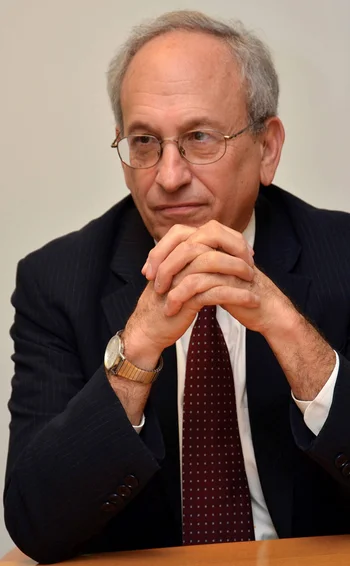
“The single most important step we took was in 1994 when we began making announcements after the meetings about what we had done,” Kohn told Central Banking. “The initial announcements were bare bones, but the announcements evolved into statements that gave some rationale about why we had done what we had done.”
From February 1993 until December 2004, FOMC minutes were published approximately three days after the committee’s subsequent meeting. Then in December 2004, the FOMC decided to release them three weeks after the date of the initial policy decision, thereby reducing the lag in their release by an average of about three weeks.
“Moving up the release of the FOMC meeting’s minutes [in 2004] was also extremely important,” Kohn said. “Another improvement has been a greater emphasis on longer-term projections and the publication of, first, semi-annual and, then, quarterly projections.”
Meanwhile, the fight against inflation had shifted into a battle against deflation by 2001. Kohn led the efforts to pre-empt falling prices.
“Summarising the research literature, Kohn told the FOMC that in the face of the deflation threat, it might want to act pre-emptively. The committee should cut interest rates before the impact of its cuts was undermined; if it waited, seeking to ‘keep its powder dry’, deflation might render the powder useless,” Mallaby says in his book. Kohn was apparently fearful of the FOMC being “pinned to the lower bound”.
The Kohn ‘put’
The debate about the fight against deflation between 2001 and 2004 is a source of controversy because efforts to prevent a Japan-style fall in prices are viewed as a major factor in driving up the value of property and financial assets. Stanford University professor of economics John Taylor viewed the “loose policy” as more reckless than anything the Fed did during the tech boom. But Kohn – by now so indispensable to Greenspan that the Fed chair petitioned president George W Bush to appoint Kohn to the Fed board by proclaiming him “one of the finest economists I have ever known” – was an advocate of using policy to mop up the after-effects of bubbles, rather than to prevent them: to ‘clean, rather than lean’.
In an interview with Central Banking in 2012, Kohn said he “would much rather deal with imbalances through regulatory policy, including macro-prudential policy”, than use monetary policy to “lean against asset price bubbles and other financial imbalances”. Moreover, he still did not believe monetary policy was too loose in the lead-up to the global financial crisis.
“I am not of the view that monetary policy through low interest rates was an important contributor to the imbalances that built up in the economy,” Kohn said.
“If monetary policy was too easy, you probably would have seen the dollar lower and a smaller current account deficit. More fundamentally, we didn’t have a big overshoot in inflation relative to our implicit target. Inflation was higher, but a lot of that was commodity and petroleum prices once again responding to very strong demand in China.”
While Kohn accepts the US could have run a much more rigorous regulatory system for banks and – in particular – non-banks to reduce the build-up of risks in the system, he appears to believe much of the blame for the US housing bubble is linked to too-low long-term interest rates, which in turn were the result of global imbalances between surplus and deficit countries.
Explicit inflation targeting
Once Bernanke took over as chair of the Federal Reserve, he asked Kohn to lead a subcommittee of the FOMC to evaluate ways the Fed could improve its monetary policy communications, including potentially shifting to an inflation target. Kohn and Bernanke had earlier appeared to take opposite sides about the virtues of inflation targeting.
“Don had described himself as a sceptic, rather than an opponent,” Bernanke said in The Courage to Act. “If Don, who commanded enormous respect from his colleagues, could find ways to alleviate his own concerns, he would move towards my position and others would follow.”
Kohn appears to have moderated his views by 2003, when Bernanke, as an FOMC member, made a forceful push for more communication. Bernanke believed it was better for the Fed to give guidance on expectations than to let market participants make their own determinations. Kohn agreed: “We need to work on how we talk about our assessments and judgements.” As a result, the FOMC started expressing what it wanted to do with interest rates, rather than merely offering its view on the economy. The Fed’s experiment with forward guidance had begun. But a shift towards a formal inflation target was still some years away.
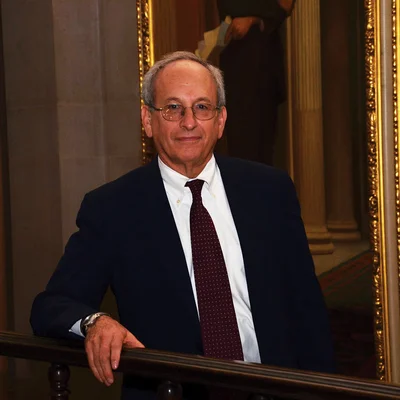
While the subcommittee – which included current Fed chair Janet Yellen and Minneapolis Fed veteran president Gary Stern – fell short of recommending a shift to inflation targeting, Bernanke moved in that direction by publicly releasing numerical information about what the FOMC meant by price stability and by publishing more detailed economic projections. The subcommittee looked at doubling the number of forecasts to four per year and being quicker in releasing them. It also made what Bernanke described as a “subtle but significant step toward formal inflation targeting by extending the forecast period for economic growth, inflation and unemployment from two years to three”. “By announcing a forecast for inflation three years out, the committee would effectively be telling the world its numerical target for inflation,” Bernanke said.
The Fed finally adopted a formal 2% inflation target on January 25, 2012, after Kohn had left office. He told Central Banking later that year that the move towards flexible inflation targeting and being more explicit about what the Fed thought price stability represented “was a good thing”, stressing it had a balanced target towards maximum employment and price stability.
Forged from crisis
Whatever criticism one might make of Federal Reserve policymakers in the lead-up to the global financial crisis, its actions in shoring up the financial system are widely held to have helped the US and the world economy avoid another Great Depression. Working as a top policymaker at the height of the global financial crisis was a time of incredible stress, as Hank Paulson vividly recalls. Paulson – Treasury secretary from 2006 to 2009, and a renowned ‘deal-maker’ while he was chief executive of Goldman Sachs – said he felt “the burden of the world” on him when it was clear Lehman Brothers was about to fail in 2008. “I don’t know what to do, and I don’t know what to say. Please pray for me,” he said he told his wife Wendy.
The pressure was also on the top Fed officials: Bernanke, New York Fed president Timothy Geithner – who would take over from Paulson as Treasury secretary – and Kohn, in particular.

Kohn has already gained experience in crisis management – helping to deal with the after-effects from the 1987 Wall Street crash, the collapse of hedge fund Long-Term Capital Management, the Asian financial crisis and the 9/11 attacks on the World Trade Center and Pentagon. But none of these fully prepared him for the tasks he was asked to tackle at the height of the global financial crisis: the alphabet soup of emergency liquidity measures; quantitative easing (QE); the bailout of Bear Stearns; Washington Mutual and AIG; the conservatorship of Fannie Mae and Freddie Mac; dealing with failing monoline insurers and money market funds that were ‘breaking the buck’; and the collapse of Lehman Brothers and subsequent efforts to find Merrill Lynch a buyer and convert the remaining two big securities dealers to banks.
Kohn and his colleagues were operating in conditions where there were few precedents, information was incomplete and unexpected interconnections endangered the global financial system. While a strong advocate of decisive action, he often urged attention to possible unintended consequences of unconventional policies. He also fostered a co-operative spirit between international central banks. And while the Fed took on unprecedented credit risk via the three Maiden Lane bailout vehicles as well as from mortgage-backed securities purchased through its multi-trillion-dollar QE programmes, Kohn always strove to ensure the Fed’s risks were covered by adequate levels of collateral.
Capital increases
Kohn was also drafted in to look into the ‘lessons learned’ for bankers and examiners. This resulted in the Fed insisting on US banks adding loss-absorbing capital, increasing their liquid assets that could be sold during a run and improve risk management. “Raising capital requirements is a solid way for encouraging banks to become more safe and salient,” Kohn told Central Banking.
“But it is not only the total of the capital, but the quality of the capital. One thing we found out in the crisis is that there is no substitute for common equity.”
He could fiercely rebut what he regarded as unjustified criticism: “To some extent, we were held accountable for things we could not do, would not do, and did not have the authority to do, like regulating mortgage originators that were not part of banks and other regulated financial institutions,” says Kohn.
Yet he was not afraid of admitting to mistakes: “But we could have done a better job, in hindsight, on supervising even regulated financial institutions in the years leading up to the crisis in 2007.”
An internationalist
Kohn was well known to fellow central bankers around the world long before the financial crisis. An avid cyclist and walker, he regularly led fellow central bankers and leading economists on hikes at the annual central Kansas City Fed symposia at Jackson Lake Lodge, located in sight of the mountain Grand Teton. The hikes were known as the ‘Don Kohn death marches’.
So it was no surprise when Kohn became chair of the Bank for International Settlements’ Committee on the Global Financial System (CGFS) in Basel in 2006. In this role, he encouraged his fellow central bankers to become better equipped to manage systemic risks, particularly as traditional credit intermediation channels became obscured by derivatives. He also persuaded fellow policymakers to implement unprecedented liquidity facilities.
He is viewed as a wise policymaker who has consistently offered his peers sage advice and steadfast moral support, often packaged with his trademark dry and self-deprecating sense of humour. Indeed, Kohn is viewed as an archetypal public servant
“His chairing of the CGFS in Basel has been extremely effective, and his own personal lucidity has been decisive to help the international community cope with the crisis since 2007,” said Trichet, president of the ECB at the time of Kohn’s retirement from the Fed in 2010. “All along his remarkable career, his contribution to the international central banking community has been outstanding.”
These views were echoed by Mark Carney, who as the then governor of the Bank of Canada, succeeded Kohn as chair of CGFS: “As chair of the CGFS, he was able to anticipate emerging challenges and guide the work programme in a way that both addressed the critical problems posed by the financial crisis and helped lay the foundations for a more stable international financial system in the future.”
When the Fed worked with the ECB and the BoE to conduct a co-ordinated cut in rates in October 2009, Bernanke said Kohn brought in the Canadians and Japanese, providing even more impact. The co-ordinated rate cut – or support for it, in the case of the Bank of Japan – was a forceful signal that the world’s leading central banks stood ready to act when necessary. Kohn was also actively involved in co-ordinating swap lines with foreign central banks, which enabled them to inject US dollar liquidity into the global financial system at a time when it was drying up outside of North America.
“His thoughtful and implacable manner provided a crucial element of calm and measured reflection in a time of panic and fear,” said Carney. “Our debt to him is enormous.”
Public servant
Through whatever lens one looks through, Kohn has made a major contribution to modern central banking. There will be those who do not agree with all of his policy views. None, however, could doubt his commitment and sense of purpose. He is viewed as a wise policymaker who has consistently offered his peers sage advice and steadfast moral support, often packaged with his trademark dry and self-deprecating sense of humour. Indeed, Kohn is viewed as an archetypal public servant.
His record of achievement has inspired others: “Don was one of the inspirations for wanting to become a central banker myself,” said Philipp Hildebrand, the vice-chairman of BlackRock and former head of the Swiss National Bank. Spencer Dale, former chief economist of the BoE, described Kohn as “a central banker’s central banker”: “There have been many occasions when faced with a tough problem or challenge that I have asked myself: ‘How would Don react to this situation?’”
Laurence Meyer, a former Fed governor, has described Kohn as the “most important non-chairman member of the board in the history of the Fed”.
Let Bernanke have the last word: “Everyone always listened when Don spoke. The contributions that he made to containing the crisis and creating a more resilient financial system will endure as a lasting memory.”
Images: Third Way Think Tank; Bank of England; Steve Dasko
Only users who have a paid subscription or are part of a corporate subscription are able to print or copy content.
To access these options, along with all other subscription benefits, please contact info@centralbanking.com or view our subscription options here: http://subscriptions.centralbanking.com/subscribe
You are currently unable to print this content. Please contact info@centralbanking.com to find out more.
You are currently unable to copy this content. Please contact info@centralbanking.com to find out more.
Copyright Infopro Digital Limited. All rights reserved.
As outlined in our terms and conditions, https://www.infopro-digital.com/terms-and-conditions/subscriptions/ (point 2.4), printing is limited to a single copy.
If you would like to purchase additional rights please email info@centralbanking.com
Copyright Infopro Digital Limited. All rights reserved.
You may share this content using our article tools. As outlined in our terms and conditions, https://www.infopro-digital.com/terms-and-conditions/subscriptions/ (clause 2.4), an Authorised User may only make one copy of the materials for their own personal use. You must also comply with the restrictions in clause 2.5.
If you would like to purchase additional rights please email info@centralbanking.com


